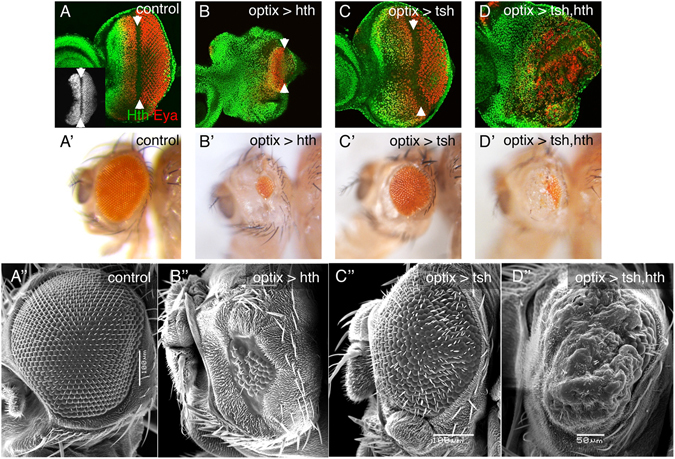Figure 1.

Forced maintenance of hth and tsh expression results in overgrowth and differentiation arrest. Late third instar (L3) eye discs (A–D) and adult heads (A’–D’ and A”–D”) from control (optix > GFP) and hth- (optix > hth), tsh- (optix > tsh) or hth + tsh- (optix > hth + tsh) expressing animals. The GFP expression driven by optix > (optix2/3-GAL4; UAS-GFP) is shown in the inset in (A). Discs are stained with anti-Eya and anti-Hth. Anterior is left, dorsal is up (this orientation will be maintained throughout). (A’–D’) Lateral views of adult heads of the same genotypes as above. (A”–D”) SEM images of lateral views of adult heads of the corresponding genotypes. Overexpression of hth (optix > hth) results in a reduced eye disc area and smaller adult eye (B,B”). tsh-overexpressing flies (optix > tsh) show almost normal discs and retinal morphology (C–C”). However, overexpression of hth and tsh (optix > hth + tsh), results in overgrown eye discs showing abnormal folds. Adult heads develop a small retinal patch and an overgrowth of indistinct cuticle (D,D”).
